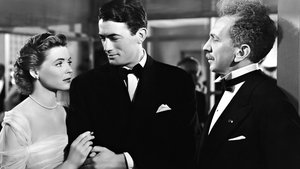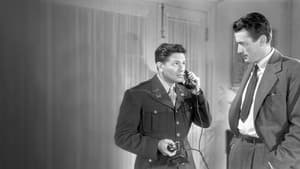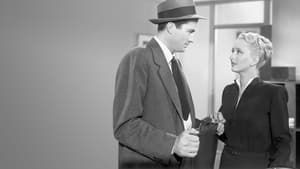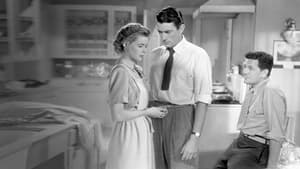Contact: [email protected]
Video Sources 0 Views

Synopsis
[ez-toc]




Introduction
In the ever-evolving landscape of cinema, the marriage of old films and modern technology has birthed a fascinating phenomenon: colorized movies. These endeavors breathe new life into the classics, making them more accessible and engaging for contemporary audiences. One such venture into the world of colorization is the timeless “Gentleman’s Agreement Colorized” (1947). This article explores the significance of colorizing old films, delves into the historical impact of “Gentleman’s Agreement Colorized,” and scrutinizes the controversial yet captivating colorized adaptation.
Read Media File Transfer Agreement: Terms and Conditions
Read FAQ
The Significance of “Gentleman’s Agreement Colorized” (1947)
“Gentleman’s Agreemen Colorizedt,” directed by the legendary Elia Kazan and based on Laura Z. Hobson’s novel, stands as a powerful commentary on antisemitism and social prejudice. Released in 1947, it left an indelible mark on cinema history, earning Kazan an Academy Award for Best Director and the film itself clinching the coveted Best Picture award. Understanding the vision of Kazan and the motivations behind Hobson’s novel is crucial to appreciating the film’s enduring impact.
The film revolves around journalist Philip Schuyler Green, played by Gregory Peck, who decides to expose the pervasive antisemitism in post-World War II America by pretending to be Jewish. His journey through this social experiment forces both characters and audiences to confront the deep-seated prejudices of the time.
The History and Impact of “Gentleman’s Agreement Colorized”
As we revisit this socially relevant masterpiece, it’s essential to consider the historical context in which it was released. “Gentleman’s Agreement Colorized” tackled sensitive issues, pushing the boundaries of societal conversation. Its success at the Oscars not only recognized its artistic brilliance but also emphasized the significance of addressing such themes in cinema. As we bring this classic into the 21st century, we must evaluate its enduring relevance in the face of modern societal challenges.
The film’s exploration of antisemitism remains a powerful reminder of the persistence of discrimination and prejudice in society. In a world grappling with similar issues today, “Gentleman’s Agreement Colorized” serves as a mirror reflecting the need for empathy, understanding, and social change.
1. The Colorization Process: Balancing Authenticity and Enhancement
Colorization is a meticulous process that walks a tightrope between preserving the original artistic integrity of black-and-white films and enhancing their visual appeal for contemporary audiences. The debate surrounding film integrity versus modern engagement rages on, and “Gentleman’s Agreement Colorized” finds itself at the heart of this discussion.
The process involves digitally adding color to each frame, breathing new life into scenes that were once only seen in shades of gray. For some, this process is sacrilegious, seen as tampering with the director’s original vision. However, proponents argue that colorization can make these classics more appealing to newer generations who may find black-and-white films less relatable.
2. AlwanFilm: Pioneers in Film Colorization Technology
Enter AlwanFilm, a restoration company that has pioneered film colorization technology. Their innovative approach combines AI algorithms with manual craftsmanship, offering a delicate balance that respects the filmmaker’s intent while breathing new life into classic cinema. The story of “Gentleman’s Agreement Colorized” is no exception to their transformative touch.
AlwanFilm’s commitment to preserving the authenticity of classic films while embracing modern technology has set a new standard in the world of restoration. Their work on “Gentleman’s Agreement Colorized” represents a harmonious blend of old and new, ensuring that the colorized version retains the spirit of the original.
The Colorized Version of “Gentleman’s Agreement Colorized”: A Controversial Adaptation
In scrutinizing the colorized rendition of “Gentleman’s Agreement Colorized,” we dissect the artistic choices made during the adaptation. How does color influence the portrayal of Darien, Connecticut, and does it impact the audience’s perception of character development and emotional resonance? These questions add layers to the controversy surrounding the colorization of cinematic masterpieces.
Darien, Connecticut, serves as a backdrop for much of the film, and colorization introduces a new dynamic to its depiction. The lush greens, serene blues, and vibrant autumnal hues add a layer of visual richness, transforming the setting from a monochromatic canvas into a vivid landscape. Critics argue that this alteration may influence the audience’s emotional connection to the characters and the narrative.
Revisiting a Cinematic Masterpiece: Does “Gentleman’s Agreement Colorized” Shine in Color?
Critical reception plays a pivotal role in determining the success of a colorized adaptation. By exploring both positive and negative reviews, we gain insight into whether the colorized version lives up to the standards set by the original. Additionally, we consider the IMDb rating as a barometer of audience appreciation, shedding light on the film’s standing in the eyes of the viewers.
The colorized “Gentleman’s Agreement” has received mixed reviews. Some praise the enhanced visual experience, arguing that it brings a new dimension to the narrative. Others, however, contend that the original black-and-white version remains the definitive way to experience the film, preserving the director’s intended atmosphere and mood.
Should You Watch “Gentleman’s Agreement” in Color or Black-and-White?
The ultimate decision lies with the viewer – should “Gentleman’s Agreement” be experienced in its original black-and-white form or in the vibrant hues of colorization? We weigh the pros and cons, considering personal preference against the director’s original artistic vision. It’s a delicate balance between nostalgia and a fresh visual interpretation.
Watching the film in black-and-white allows audiences to immerse themselves in the historical context of the late 1940s, experiencing the film as it was originally conceived. On the other hand, the colorized version introduces a modern aesthetic, potentially attracting a new audience who may find it easier to connect with the story.
Preserving Film Heritage: The Role of Colorization in Saving Old Movies for Future Generations
As we delve into the role of colorization in preserving film heritage, we highlight the long-term archival benefits. Colorization serves as a gateway for younger audiences to connect with classic films, ensuring that the cinematic treasures of the past remain relevant in the digital age. Initiatives using AI and machine learning, like those undertaken by AlwanFilm, play a pivotal role in safeguarding our cinematic history.
Old movies, particularly those in black-and-white, risk fading into obscurity as newer generations gravitate towards visually striking and technologically advanced productions. Colorization acts as a bridge, connecting the past with the present and ensuring that the brilliance of classic cinema continues to captivate audiences for generations to come.
Bringing “Gentleman’s Agreement” into the 21st Century: The Relevance of its Themes Today
The enduring themes of “Gentleman’s Agreement” resonate with modern challenges such as religious discrimination and identity politics. The film’s exploration of these issues transcends its initial release, inviting audiences to reflect on the present. As we confront contemporary societal dilemmas, “Gentleman’s Agreement” remains a poignant and relevant cinematic touchstone.
The film’s unflinching portrayal of antisemitism serves as a stark reminder that the struggle against prejudice is ongoing. In a world grappling with similar issues today, the themes explored in “Gentleman’s Agreement” continue to be relevant, urging viewers to consider the impact of discrimination and the importance of fostering understanding and acceptance.
Conclusion
In conclusion, “Gentleman’s Agreement” stands as a testament to the timeless power of cinema. Whether viewed in its original black-and-white glory or through the lens of modern colorization, the film’s significance is undeniable. Encouraging readers to appreciate both versions, we emphasize the importance of supporting initiatives that preserve and restore old movies. Technology, particularly AI, plays a crucial role in bridging the gap between the past and present, ensuring that the magic of classic cinema continues to captivate audiences for generations to come.
As we embark on this colorized cinematic journey through time, let us celebrate the artistry of the past, embrace the innovations of the present, and pave the way for a future where the treasures of old movies remain vibrant and relevant. “Gentleman’s Agreement,” in all its forms, deserves its place in the pantheon of cinematic masterpieces, reminding us that the magic of storytelling transcends the boundaries of time and technology.



















